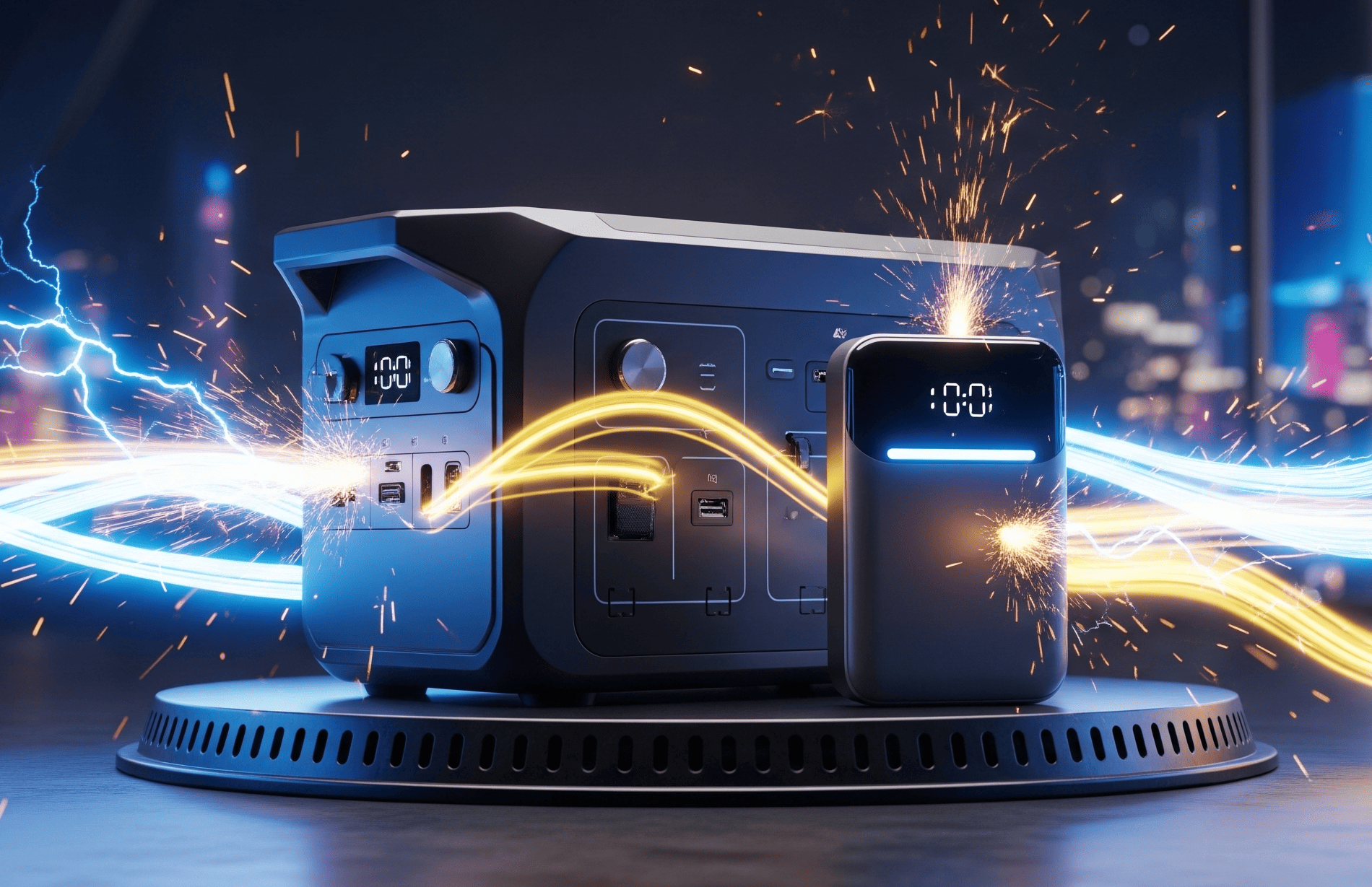
The Ultimate Guide to 2025’s Fastest-Charging Power Stations and Power Banks
Discover the quickest ways to power up your devices in record time
This page uses affiliate links, which may earn us commissions from purchases made at no cost to you.
In 2025, the demand for reliable, portable power has never been higher. From digital nomads working in remote locations to families preparing for grid emergencies, the ability to recharge our essential devices quickly is no longer a luxury, it’s a necessity. This year marks a significant leap forward in charging technology, with manufacturers delivering products that can go from empty to full in the time it takes to brew a pot of coffee. This guide delves into the fastest-charging power stations and power banks on the market, explains the technology that makes them possible, and helps you choose the perfect solution for your needs.
Understanding the Tech Behind the Speed
Before we look at the top models, it’s important to understand the key innovations driving this fast-charge revolution.
GaN (Gallium Nitride) Technology
For years, silicon was the primary material used in chargers. GaN is a crystal-like semiconductor material that is far more efficient. It produces less heat, allowing manufacturers to pack more power into smaller, lighter chargers and power banks without the risk of overheating.
USB-C Power Delivery 3.1 (PD 3.1)
This is the latest standard in USB charging. While older standards topped out around 100W, PD 3.1 can deliver up to 240W of power. This is a game-changer, enabling a single USB-C cable to rapidly charge not just phones and tablets, but also high-performance laptops and even power-hungry appliances.
Battery Chemistry: LiFePO4 vs. Li-ion
Many of 2025’s top power stations use Lithium Iron Phosphate (LiFePO4) batteries instead of the traditional Lithium-ion (Li-ion) cells found in most phones. LiFePO4 batteries offer a significantly longer lifespan, often 3,000+ charge cycles compared to 500-800 for Li-ion, are more thermally stable, safer, and can handle faster charging and discharging rates without degrading quickly.
Why You Need Both a Power Station and a Power Bank
Power stations and power banks serve distinct yet complementary roles in keeping your devices powered. Power stations are robust, high-capacity solutions designed for heavy-duty needs, such as running appliances like refrigerators, power tools, or medical equipment during outages or off-grid adventures. Their large capacities and multiple port options, including AC outlets, make them ideal for home backup, camping, or RV living. Power banks, on the other hand, are compact and portable, perfect for charging personal devices like smartphones, tablets, and laptops on the go. Their lightweight design and USB-based outputs cater to travelers, commuters, or anyone needing quick top-ups. Together, they cover all scenarios, from emergency preparedness to daily convenience, ensuring you’re never left without power.
Next-Gen Fastest Charging Power Stations of 2025
Power stations are the heavy lifters of portable energy, designed to run everything from laptops and cameras to refrigerators and power tools. These are the models leading the pack in recharge speed.
EcoFlow Delta 2 Max
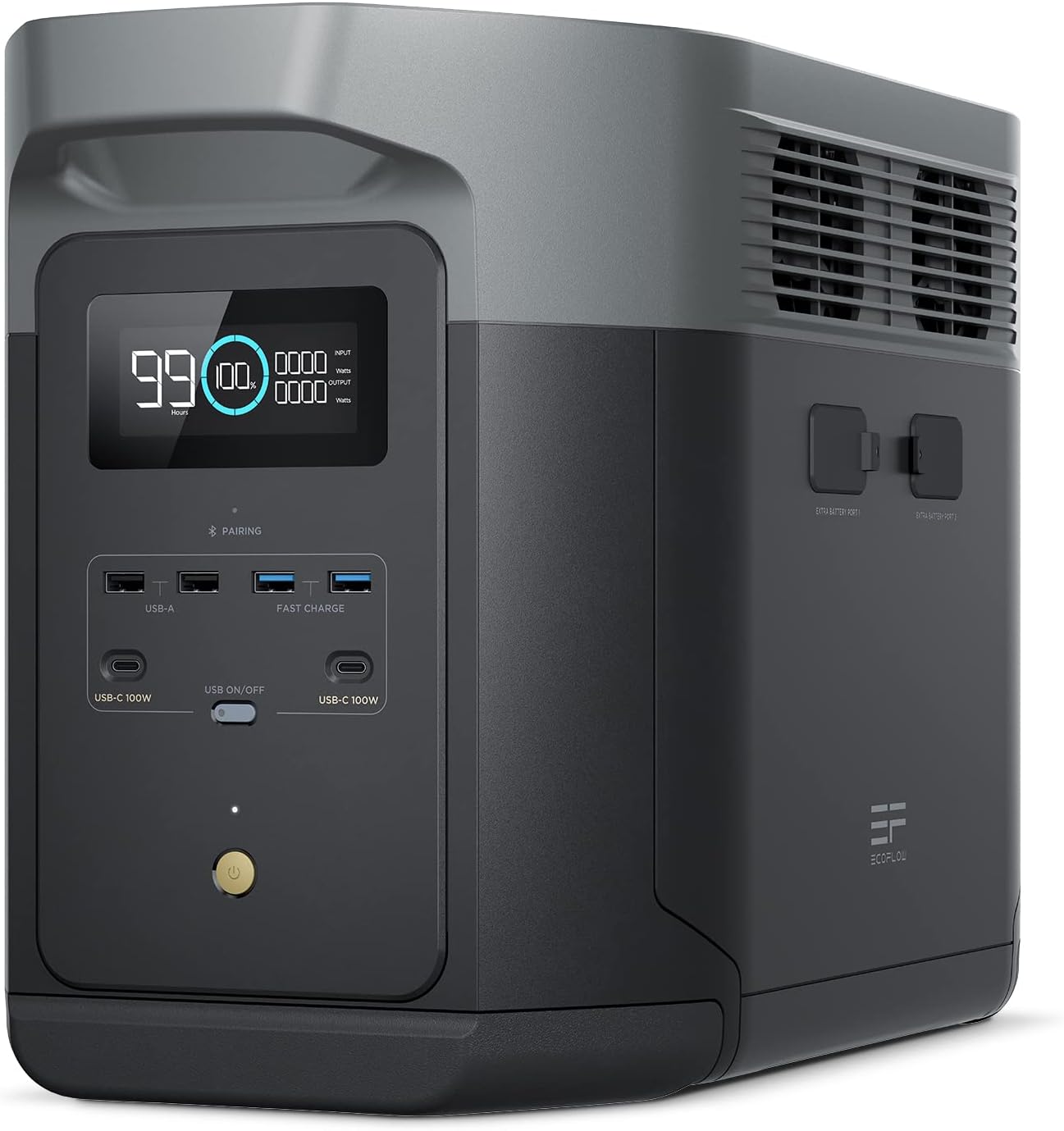
Blazing Fast Recharge: A standout feature of the Delta 2 Max is its ability to go from 0-80% charge in just 53 minutes from a standard AC wall outlet, with a full charge taking around 75 minutes. This is made possible by its advanced LiFePO4 battery and proprietary X-Stream charging technology.
Versatile and Expandable Power: With a 2,048Wh capacity and 13 output ports, it’s a versatile hub for any situation. It supports up to 1,000W of solar input for fast off-grid charging and its capacity can be expanded with extra batteries, making it a future-proof investment for home backup or RV living.
Highlights:
- Capacity: 2,048Wh
- Recharge Time: 0-80% in 53 minutes
- Output: Up to 2,400W
- Expandable Capacity
Best for:
- Home backup and RV living
VTOMAN FlashSpeed 1500
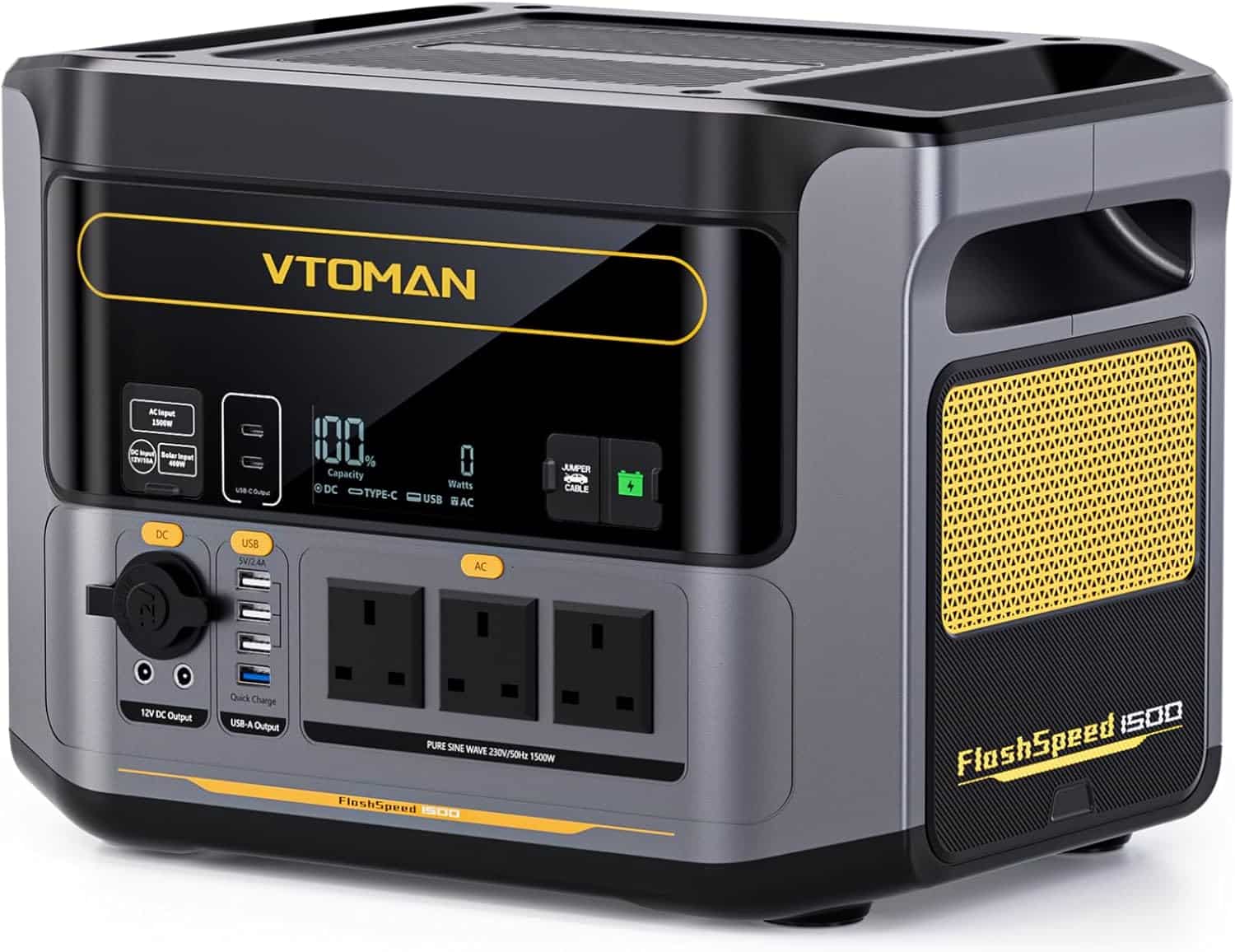
The One-Hour Champion: True to its name, the FlashSpeed 1500 is engineered for speed, capable of reaching a 100% charge in just one hour from a wall outlet. This makes it incredibly convenient for last-minute trips or for quick replenishment during an emergency.
Power for Demanding Tools: While its 1,500Wh capacity is impressive, its main draw is the 3,000W surge output. This allows it to handle the initial power spike from demanding appliances like circular saws, blenders, and air conditioners, a feature often missing in similarly sized units.
Highlights:
- Capacity: 1,500Wh
- Recharge Time: Full in 1 hour
- Output: 1,500W (3,000W surge)
- LiFePO4 Battery
Best for:
- Emergency power and tools
Fossibot F3600Pro
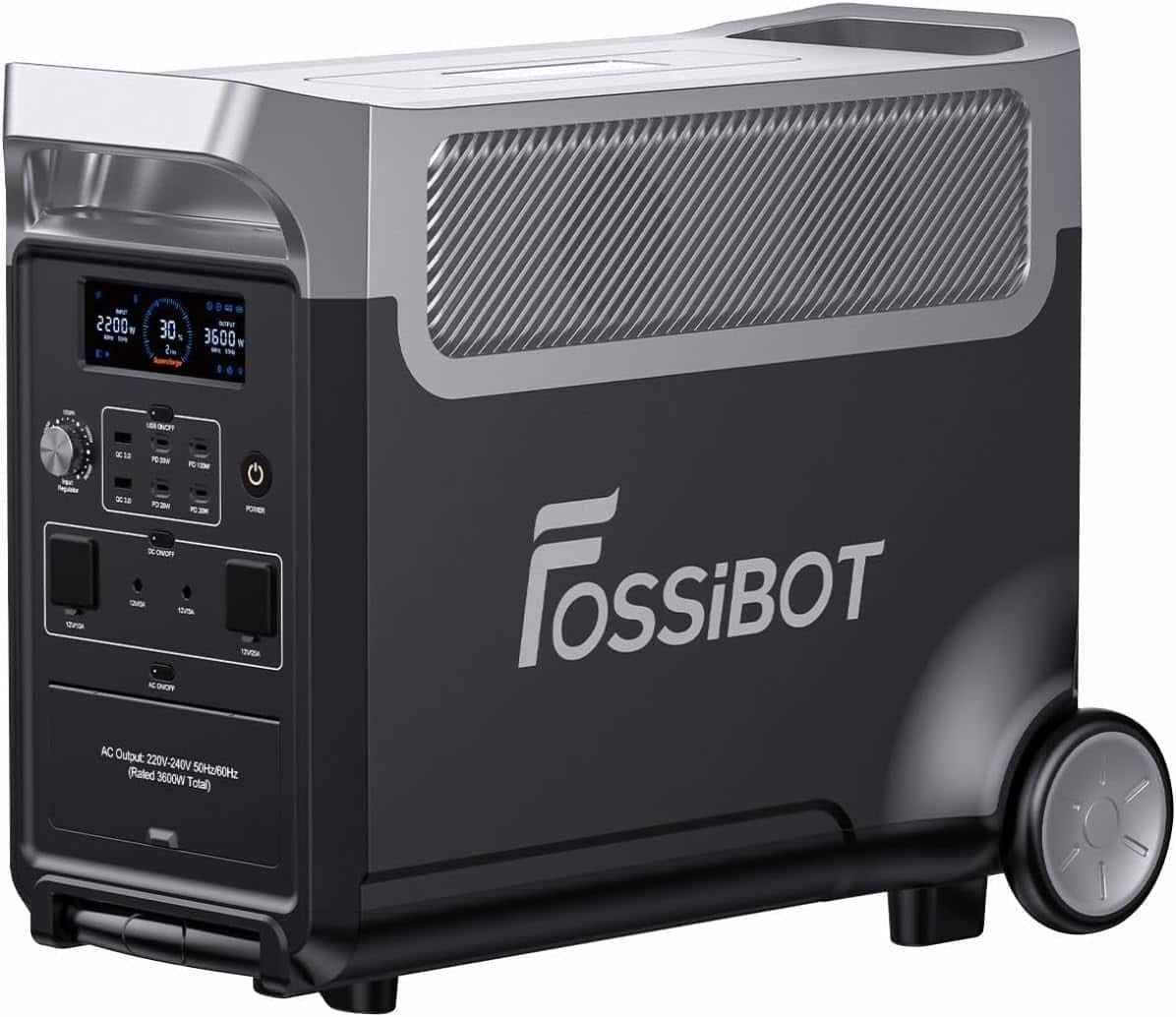
Unmatched Capacity and Speed: For those who need maximum power without a long wait, the F3600Pro is a titan. It boasts a massive 3,840Wh capacity and can still achieve a full charge in an astonishing 1.5 hours. It also supports hybrid charging, allowing you to combine AC and solar power for even faster replenishment.
The Ultimate All-in-One Hub: This isn’t just a power station; it’s a complete energy solution. With 13 different ports, including a 48V RV outlet, it can power virtually any device or appliance imaginable. Its rugged, wheeled design makes it manageable despite its immense power, positioning it as the top choice for serious off-grid use or comprehensive home backup.
Highlights:
- Capacity: 3,840Wh
- Recharge Time: Full in 1.5 hours
- Output: 3,600W
- Hybrid Charging Support
Best for:
- Off-grid and home backup
Fastest Charging Power Banks of 2025
For ultimate portability, power banks are essential. These 2025 models ensure you’re never caught with a dead battery, recharging themselves and your devices in record time.
Anker Prime 250W Power Bank
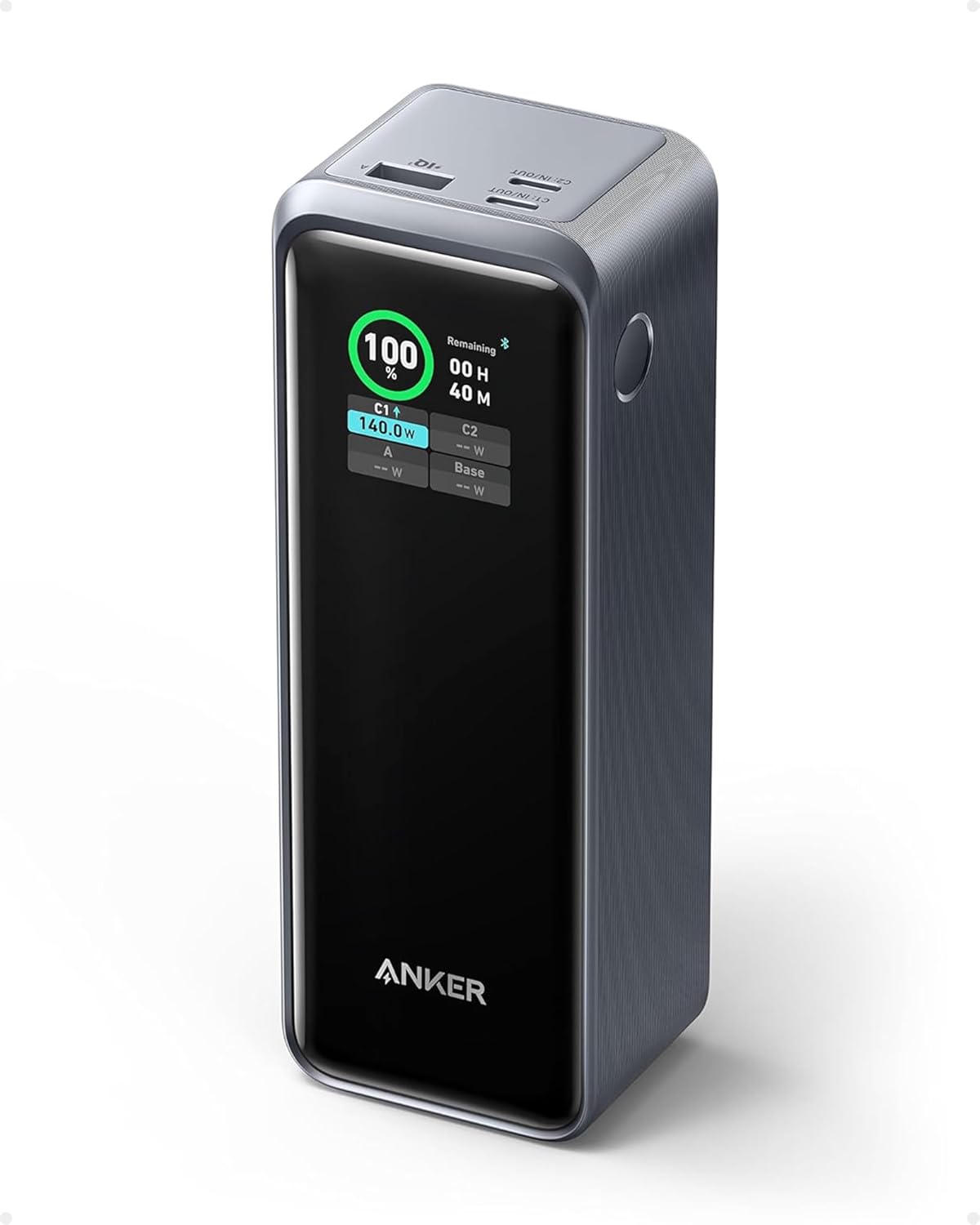
Recharge in Minutes, Not Hours: The Anker Prime sets a new standard for power bank recharging. When paired with a 140W wall charger, it can go from empty to full in under 40 minutes. This means you can fully recharge it while you get ready to leave the house.
Desktop-Grade Power in Your Pocket: With a total output of 250W distributed across two USB-C ports and one USB-A port, it can simultaneously fast-charge two high-performance laptops. The smart digital display provides real-time data on power input, output, and remaining charge time.
Highlights:
- Capacity: 27,650mAh
- Recharge Time: Full in under 40 minutes
- Output: 250W total
- Smart Digital Display
Best for:
- Multi-device laptop charging
EcoFlow RAPID Pro
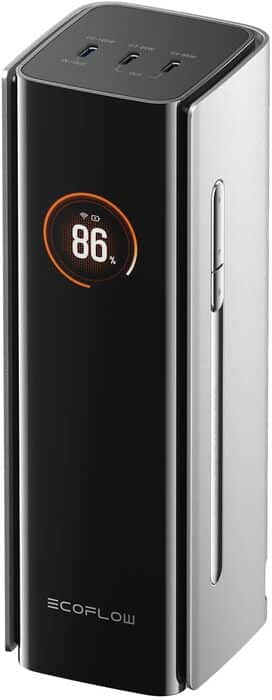
Unprecedented Recharging Speed: The RAPID Pro lives up to its name, capable of charging from 0 to 80% in a mere 20 minutes when connected to a compatible high-wattage charger. This is the fastest recharging speed available in a consumer power bank today, making it perfect for travellers and professionals with tight schedules.
Efficient and Smart: It features a 20,000mAh capacity, enough to charge a modern laptop once or a smartphone several times over. Its intelligent battery management system ensures both rapid charging and device safety, making it a reliable companion for all your tech.
Highlights:
- Capacity: 20,000mAh
- Recharge Time: 0-80% in 20 minutes
- Output: Up to 140W
- Intelligent BMS
Best for:
- Travel and quick top-ups
Xiaomi Power Bank Ultra 212W
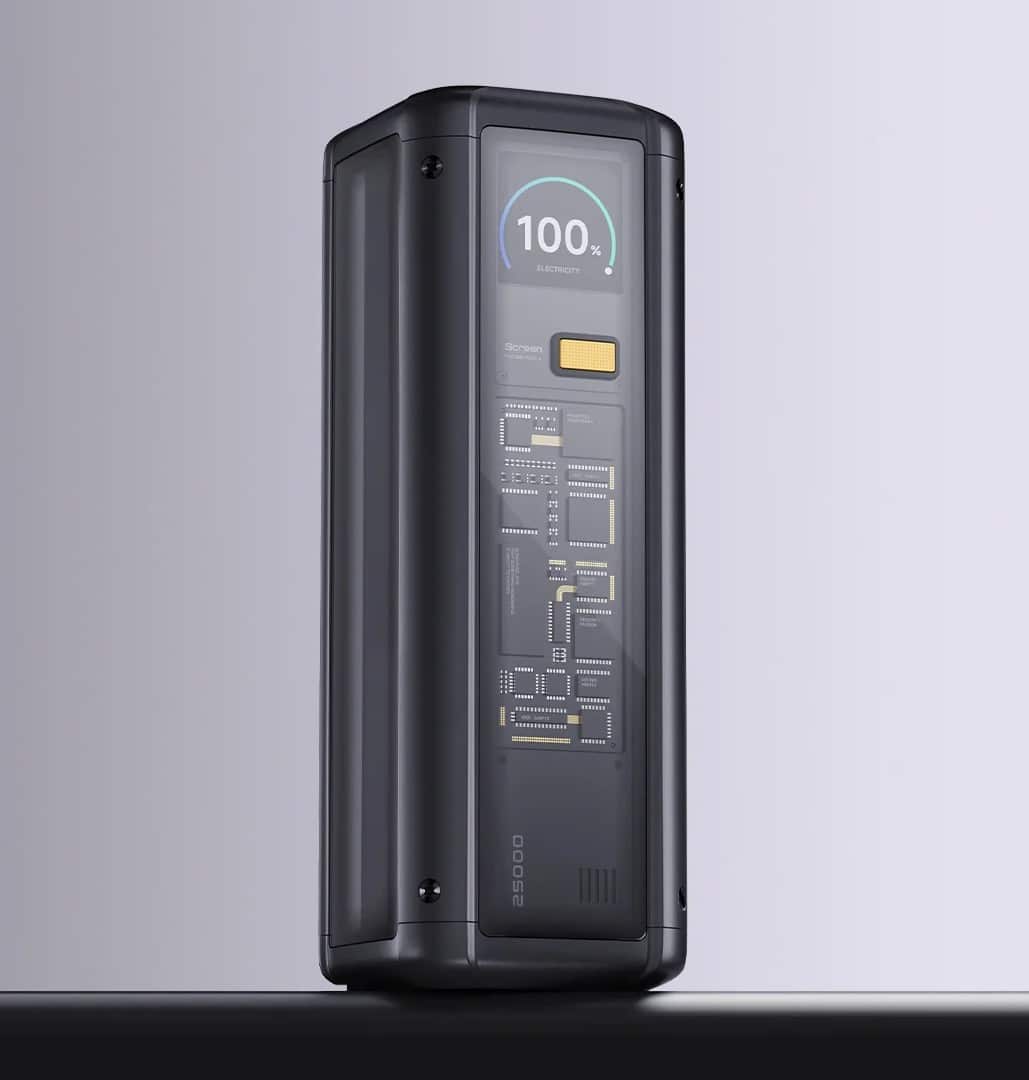
Extreme Output for Power Users: While its self-charge time is a respectable 2.5 hours, the Xiaomi Ultra’s strength lies in its incredible 212W combined output. It can deliver up to 140W from a single USB-C port, enough to power a 16-inch MacBook Pro, while simultaneously fast-charging a phone and another device.
Premium Design and Safety: Encased in a sleek, brushed aluminum shell, this power bank looks as good as it performs. It is packed with safety features, including multiple temperature sensors and dedicated safety ICs for each port, ensuring reliable and safe operation even at maximum output.
Highlights:
- Capacity: 25,000mAh
- Recharge Time: Full in 2.5 hours
- Output: 212W combined
- Brushed Aluminum Design
Best for:
- Power users with multiple devices
How to Choose the Right Fast-Charging Solution
Assess Your Power Needs
Start by listing the devices you need to power. Note their wattage requirements, for example, a laptop might need 65W, a phone 20W. For power stations, think in terms of watt-hours (Wh). A 2,000Wh station can run a 100W device for approximately 20 hours. Sum up your needs to determine the capacity you require.
Prioritize Portability vs. Capacity
A larger capacity inevitably means more weight and size. If you’re a backpacker or frequent flyer, a lightweight power bank is ideal. If you’re planning for home backup or car camping, a larger, more powerful station is the better choice.
Consider Your Recharging Environment
How will you recharge the unit itself? If you have constant access to wall outlets, AC recharge speed is your top priority. If you’ll be off-grid, look for a model with high solar input wattage for faster, greener charging.
Check for Key Safety Features
Reputable brands build in comprehensive safety systems. Look for features like overcharge protection, short circuit protection, and temperature control. A good battery management system (BMS) is crucial for both safety and longevity.
Frequently Asked Questions (Q&A)
Is fast charging bad for my device’s battery?
Modern devices and chargers are designed with smart charging technology. They communicate to ensure the battery only receives the power it can safely handle. While any charging generates some heat, fast charging from a reputable brand will not significantly harm your device’s long-term battery health.
Can I take a power station or power bank on an airplane?
It depends on the capacity. Most airlines restrict batteries to 100Wh in carry-on luggage. Some may allow up to 160Wh with prior approval. This means almost all power stations are prohibited on flights. Most power banks, however, fall under the 100Wh limit and are perfectly fine to carry on. Always check with your specific airline before travelling.
What’s the difference between a power station and a power bank?
The main differences are capacity and port selection. Power banks are designed for portability to charge personal electronics like phones and laptops, and usually only have USB ports. Power stations are much larger, have higher capacities, and include a wider array of ports, including standard AC wall outlets, allowing them to power appliances.
How many times can I recharge one of these before the battery degrades?
This is measured in charge cycles. For power banks and older power stations with Lithium-ion batteries, you can expect 500-800 cycles before the capacity drops to around 80%. For newer power stations with LiFePO4 batteries, that number skyrockets to 3,000 cycles or more, meaning it could last for a decade of regular use.
Power Your Life with Speed and Style
The fastest-charging power stations and power banks of 2025, like the EcoFlow Delta 2 Max, VTOMAN FlashSpeed 1500, Fossibot F3600Pro, Anker Prime, EcoFlow RAPID Pro, and Xiaomi Ultra, redefine portable power with unprecedented speed and versatility. Whether you need a robust power station for off-grid adventures or a compact power bank for daily commutes, these devices leverage cutting-edge GaN technology, USB-C PD 3.1, and LiFePO4 batteries to keep you powered in record time. As technology continues to evolve, we can only imagine what 2026 will bring to make charging even faster and more efficient. Choose one of these solutions today to stay connected, no matter where life takes you.
Explore More Power Solutions!
Discover a wide selection of power stations and banks to keep your devices charged during work, travel, and beyond.
Explore Power Solutions